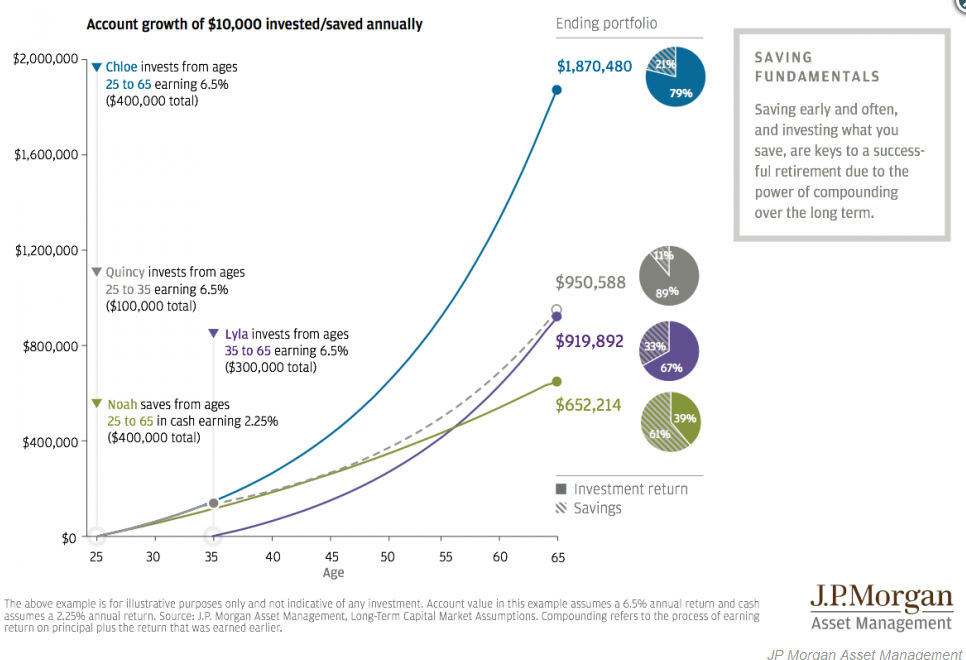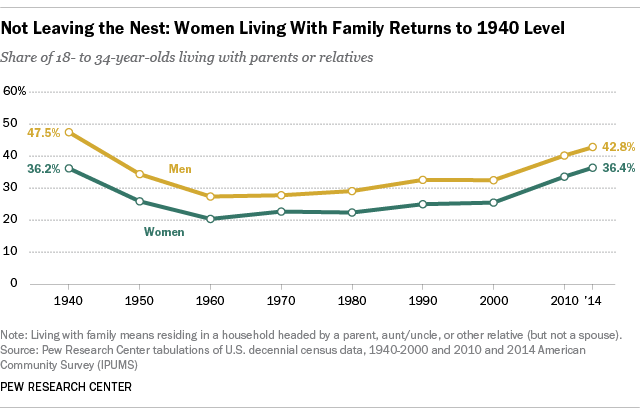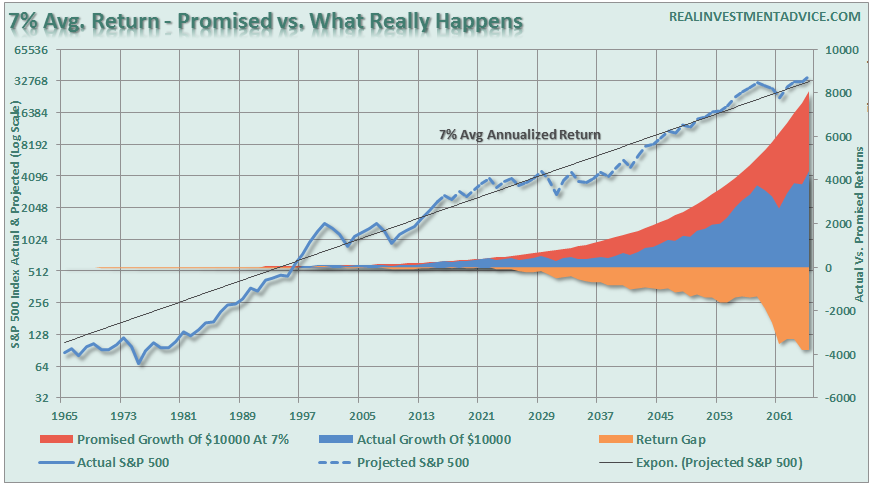Submitted by Lance Roberts via RealInvestmentAdvice.com,
Turning To Debt To Sustain Living Standard
There was an awful lot of cheering about the recent retail sales report which showed an uptick of 0.8% which beat the analyst’s estimates of 0.6%. Despite the fact, the improvement was driven by a surge in gasoline prices (which is important as consumers did not consume MORE of the product, but just paid more for it) important discretionary areas like restaurants and furniture declined.
However, if we dig deeper behind the headlines more troubling trends emerge for the consumer which begins to erode the narrative of the “economy is doing great” and “there is no recession” in sight.
While there is always a lot of “jiggering” of the economic data with seasonal adjustments, such can be quickly eliminated by using a 12-month average to smooth the non-seasonally adjusted numbers. As shown, the annual percentage change of the 12-month average shows retail sales creeping along levels that have normally been coincident with weak economic environments.
Despite ongoing prognostications of a “recession nowhere in sight,” it should be remembered that consumption drives roughly 2/3rds of the economy. Of that, retail sales comprise about 40%. Therefore, the ongoing deterioration in retail sales should not be readily dismissed.
More troubling is the rise in consumer credit relative to the decline in retail sales as shown below.
What this suggests is that consumers are struggling just to maintain their current living standard and have resorted to credit to make ends meet. Since the amount of credit extended to any one individual is finite, it should not surprise anyone that such a surge in credit as retail sales decline has been a precursor to previous recessions.
Further, the weakness of consumption can be seen in the levels of retailers inventory relative to their actual sales.
We can also view this problem with retail sales by looking at the National Federation of Independent Business Small Business Survey. The survey asks respondents about last quarter’s actual sales versus next quarter’s expectations.
Not surprisingly, expectations are always much more optimistic than reality turns out to be. However, what is important is that both actual and expected retail sales are declining from levels that have historically been indicative of a recession.
Also, since the average of expected and actual retail sales from the survey also closely tracks actual inflation-adjusted retail sales, expectations of a strong holiday spending season should likely be curtailed.
With consumer credit surging, without a relevant pickup in spending, to more than 26% of DPI, the economic strain is clearly evident. Given that it took a surge of $11 Trillion in credit to offset a decline in economic growth from 8% in the 70’s to an average of 4% during the 80’s and 90’s, it is unlikely that consumers can repeat that “hat trick” again.
President-Elect Trump is going to have his work cut out for him.
You Should Really Ignore This Chart…Really!
There are two primary reasons Millennials aren’t saving like they should. The first is the lack of money to save, the second is the lack of trust in Wall Street. A recent post from JP Morgan, via Andy Kiersz, got me to thinking on this issue.
“JPMorgan shows outcomes for four hypothetical investors who invest $10,000 a year at a 6.5% annual rate of return over different periods of their lives:
- Chloe invests for her entire working life, from 25 to 65.
- Lyla starts 10 years later, investing from 35 to 65.
- Quincy puts money away for only 10 years at the start of his career, from ages 25 to 35.
- Noah saves from 25 to 65 like Chloe, but instead of being moderately aggressive with his investments he simply holds cash at a 2.25% annual return.”
There are two main problems with this entire bit of analysis.
Saving Is A Problem
First, while saving $10,000 a year sounds great, the real problem is that median incomes in the U.S. for 80% of wage earners is $44,732 (via the Census Bureau, 2015 most recent data).
The problem, of course, is JP Morgan assumes that these young individuals are able to save an astounding 25% of their annual incomes. This is not a realistic assumption given that many of the Millennial age group are struggling with student loan and credit card debts, car notes, apartment rent, etc.
But it really isn’t just the Millennial age group that are struggling to save money but the entirety of the population in the bottom 80% of income earners. According to a recent McKinsey & Company study, 81% of American’s are now worse off than they were in 2005,
“Based on market income from wages and capital, the study shows 81% of US citizens are worse off now than a decade ago. In France the figure is 63%, Italy 97%, and Sweden 20%.”
Then there is the New York Federal Reserve which also discussed that 15% of American’s have “negative net wealth.”
So, how are Chloe, Lyla, Noah and Quincy to save $10,000 a year when Chole works as a nursing assistant, Lyla waits tables, Noah is a bartender and Quincy works retail? (These are the jobs that have made up a bulk of the employment increases since 2009. They are also in the lower wage paying scales which makes the problem of savings for difficult.) This is also why Millennials are setting new records for living with their parents.
“Young people started moving out mid-century as they became more economically independent, and by 1960 only 24% of young adults total—men and women—were living with mom and dad. But that number has been rising ever since, and in 2014, the number of young women living with their parents eclipsed 1940s—albeit by less than a percentage point. And last year 43% of young men were living at home, which is the highest rate since 1940.”
“But Lance, wages have been rising recently. That helps, right?”
While we have, at long last, seen an uptick in wages recently, there are two main problems with looking at the headline data.
First, the growth rate of wages remains well behind levels seen prior to the financial crisis and woefully behind levels of rising health care, food and other related living costs that eat up a substantial portion of incomes reducing the ability to save.
Secondly, wage growth has primarily only occurred in the top-20% of wage earners who are in executive/management/supervisory roles.
So, yes, Millennials SHOULD save more – they just don’t have anything to actually save.
Stocks Do Not Deliver Compound Rates Of Return
The second major problem with JPM’s analysis is the assumption that stocks deliver compounded returns over the long-term. This is one of the biggest fallacies perpetrated by Wall Street on individuals in the effort to entice them to sink their money in “fee-based” investment strategies and forget about them.
Compound returns ONLY occur in investments that have a return of principal function and an interest rate such as CD’s or Bonds (not bond funds.) This is not the case with stocks as I have explained previously:
“While over the long-term (1900-Present) the average rate of return may have been 10% (total return), the markets did not deliver 10% every single year. As I discussed just recently, a loss in any given year destroys the ‘compounding effect:’
Let’s assume an investor wants to compound their investments by 10% a year over a 5-year period.”
“The ‘power of compounding’ ONLY WORKS when you do not lose money. As shown, after three straight years of 10% returns, a drawdown of just 10% cuts the average annual compound growth rate by 50%.
Furthermore, it then requires a 30% return to regain the average rate of return required. In reality, chasing returns is much less important to your long-term investment success than most believe.”
JPM’s assessment shows a nice smooth acceleration of wealth for the four individuals, there is a huge difference that occurs when accounting for the variability of returns during a long-term investment period. To wit:
“Here is another way to view the difference between what was ‘promised,’ versus what ‘actually’ happened. The chart below takes the average rate of return, and price volatility, of the markets from the 1960’s to present and extrapolates those returns into the future.”
“When imputing volatility into returns, the differential between what investors were promised (and this is a huge flaw in financial planning) and what actually happened to their money is substantial over the long-term.”
Lastly, and probably the most critical point, is valuation level of the market when these individuals began the saving and investing program.
The problem for Chloe and her friends is that valuation levels are currently at some of the highest levels recorded in market history. The chart below shows REAL rolling returns for stock-based investments over 20-year time frames at various valuation levels throughout history.
Of course, none of this even includes the negative impacts to individuals and their savings due to the emotional and psychological impact of market volatility over time. (Read:“Dalbar: Why You Suck At Investing.”)
Unfortunately, for individuals, the ultimate results between what they have been promised, and what actually occurs, continues to be two entirely different things and generally not for the better.
Don’t misunderstand me. Should individuals invest in the financial markets? Absolutely.
However, depending on the markets to make up for a savings shortfall, combined with unrealistic forward return projections, is a continued recipe for disaster.
But, of course, since pension funds and endowments still have not learned their lessons, why should we expect individuals to have learned any different? The next major bear market/recession will likely finally cure the continued errors of confusing “average” with “actual” annualized returns.
Just some things I am thinking about.
The post 3 Things: Retail Sales, Recurring Ignorance, & Return Reality appeared first on crude-oil.top.












